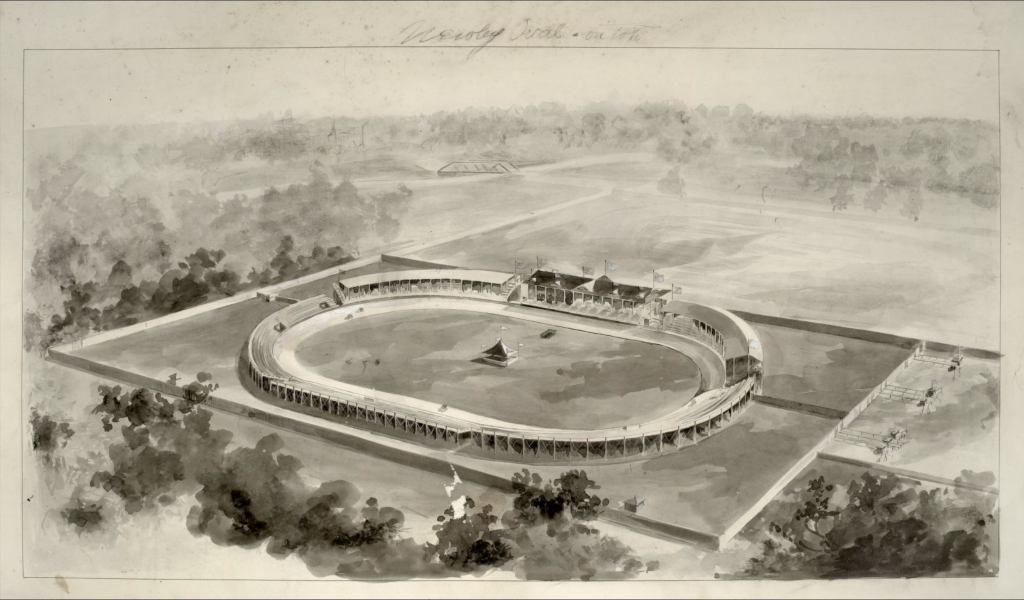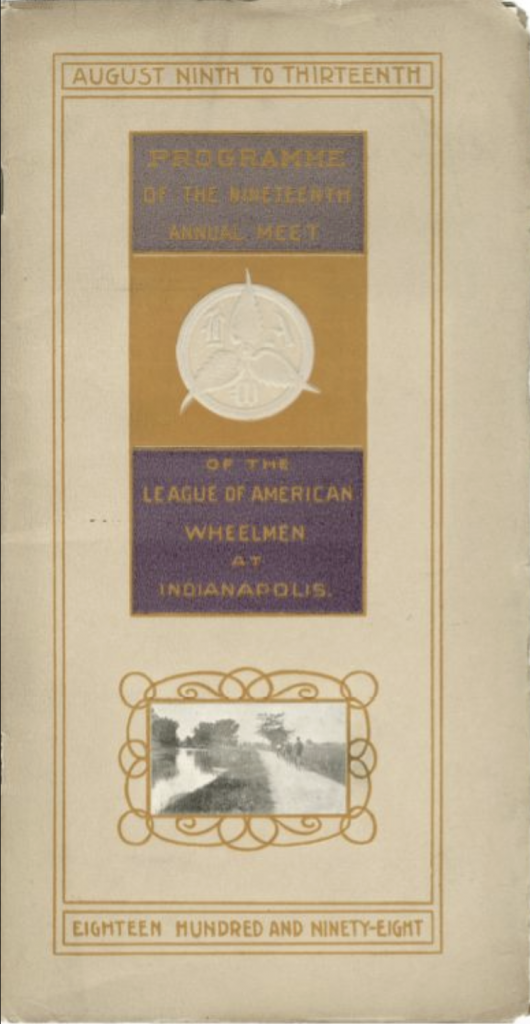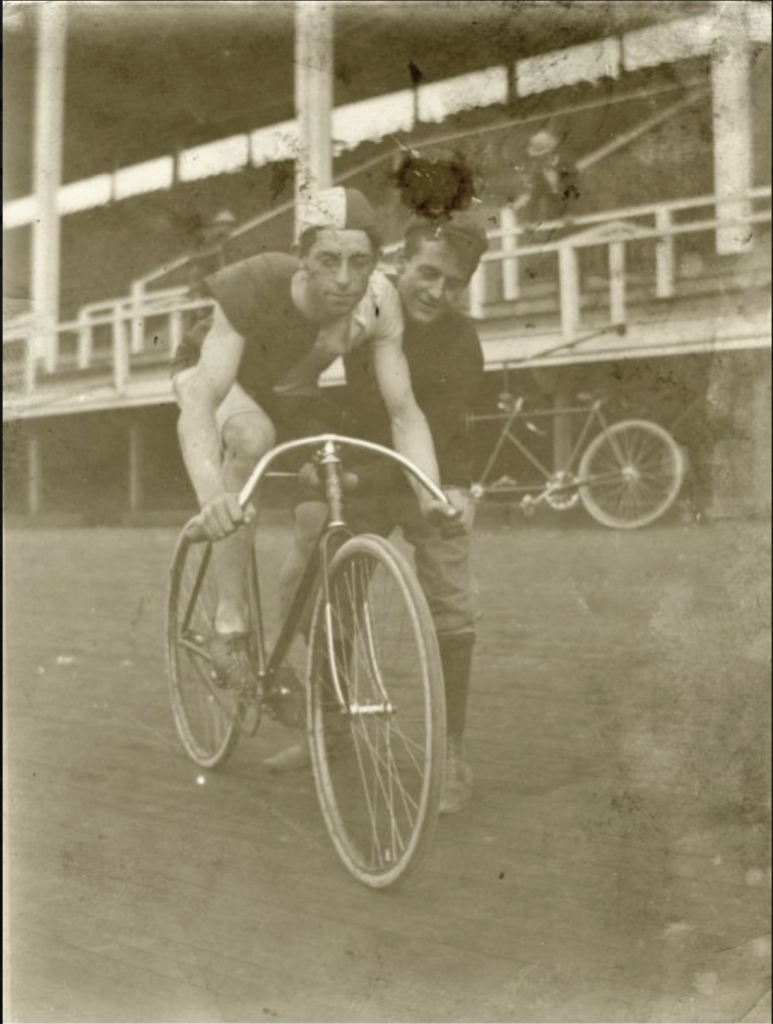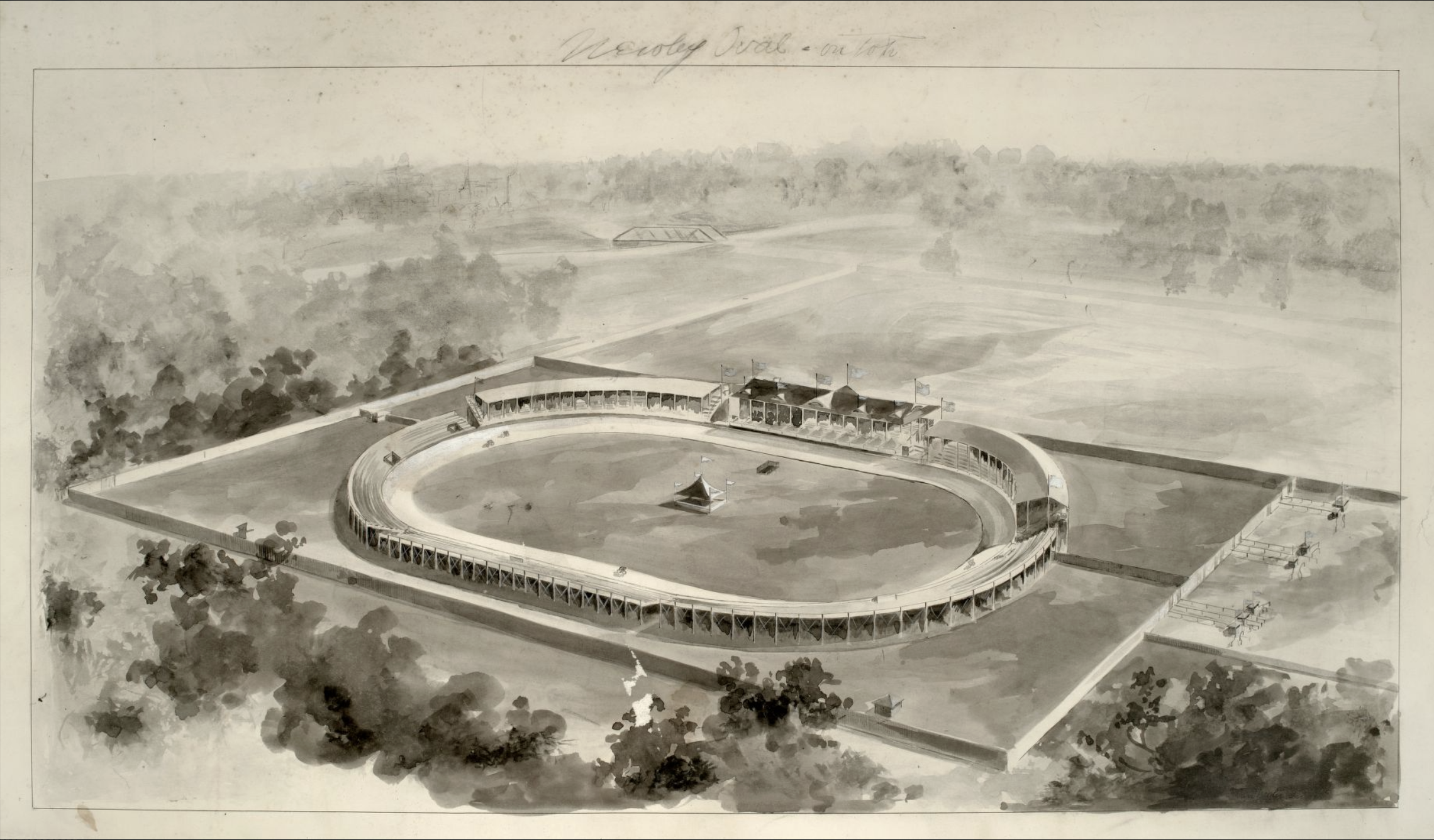Indianapolis bicycle chain manufacturer and cycling enthusiast devised a plan to build a cycling track called the Newby Oval in response to a need for a safe place for a local group of avid cyclists to race their bikes. Many of them, including Newby’s future cofounders and belonged to the Newby had organized to participate in leisurely rides and racing events in 1890.

During the mid-1890s national cycling craze, the largest national cycling organization, the League of American Wheelmen (LAW) boasted 100,000 members. Newby was convinced he could lure LAW to hold its National Meet in Indianapolis if the right venue existed.
Fellow cyclist and architect , then the president of LAW, laid out the quarter-mile track’s design with white pine boards, rough side up to keep wheels from slipping. Wire brushing removed splinters before the floorboards were dipped into a tank of wood preservative and nailed into place. Unlike flat courses, this “whale-back” design featured banked curves.

Located at Central Avenue and 31st Street just north of , the venue boasted a 2,000-seat grandstand on the southside, a 2,500-seat amphitheater on the northside, and seating for 1,500 spectators in bleachers circling the track. Costing $23,000, the state-of-the-art track, which came with electrical arc lighting to facilitate nighttime racing, was mostly ready for business in April 1898.
The Indianapolis Wheelman’s Club became the first group to test the Newby Oval on July 4, 1898. Though the amphitheaters and seats were only half finished, the reported that the men and women who took to the oval proclaimed it to be the fastest track they had ever ridden.
With positive feedback coming from the Indiana division of LAW, the 19th annual National League of American Wheelmen Meet occurred at the Newby Oval from August 9-13, 1898. Nationally known racers such as “Plugger Bill” Martin and Tom Cooper showed up, and 15-year-old, Indianapolis native set the Newby Oval track record during the event.
Newby tried to boost attendance and make the venue profitable by hosting other events. In fact, one week after LAW’s National meet, the Knights of Pythias held its biennial prize drills at the oval during its national encampment in Indianapolis. Around 1,500 spectators watched as members of Pythias lodges from across the country participated in the contest that involved military-style drills with swords. Numerous Fourth of July celebrations took place at the Oval, including a $1,000 firework display and bicycle race for “local colored professionals” in 1899.

presidential candidates William Jennings Bryan and Adlai Stevenson were slated to receive official notification of their nominations at the Newby Oval in 1900, although the location was switched to . Occasionally, shows, high school football games, and concerts took place at the venue, but the infrequency of these events led the Oval to the brink of bankruptcy.
The Newby Oval continued to hold bicycle races through 1902. However, as interest in automobile racing increased fewer people came to watch bicycle races. Thus, Newby made plans to host the city’s first auto race at the Newby Oval. The race, however, ultimately moved to the when Newby discovered cars would have to race in separate heats rather than all at once.
Interest in automobile racing outpaced that of bicycle racing, as the newer, faster spectator sport was born. Newby sold the Newby Oval’s building materials in 1903, preceding the dismantling of the venue. The , for which Newby was founder and co-owner, sold one year later. He moved on to direct his attention to automobile manufacture, with the , and to automobile racing, with the Indianapolis Motor Speedway.
An Indiana state historical marker, dedicated in July 2021, commemorates the site of the Newby Oval.

Help improve this entry
Contribute information, offer corrections, suggest images.
You can also recommend new entries related to this topic.
